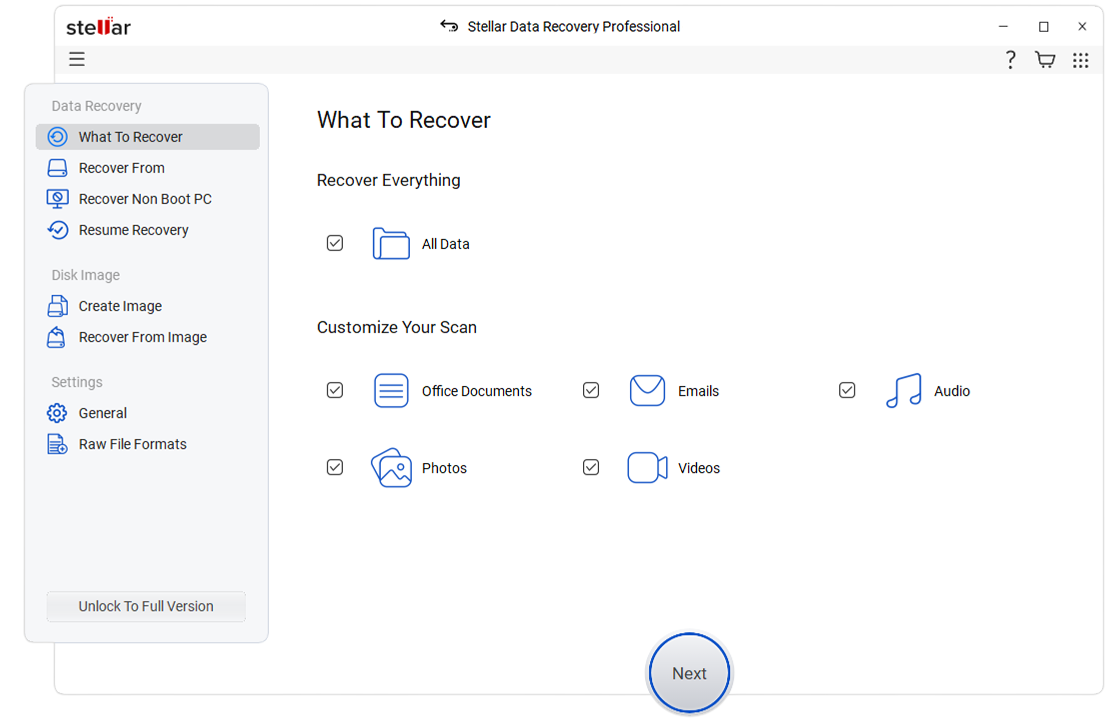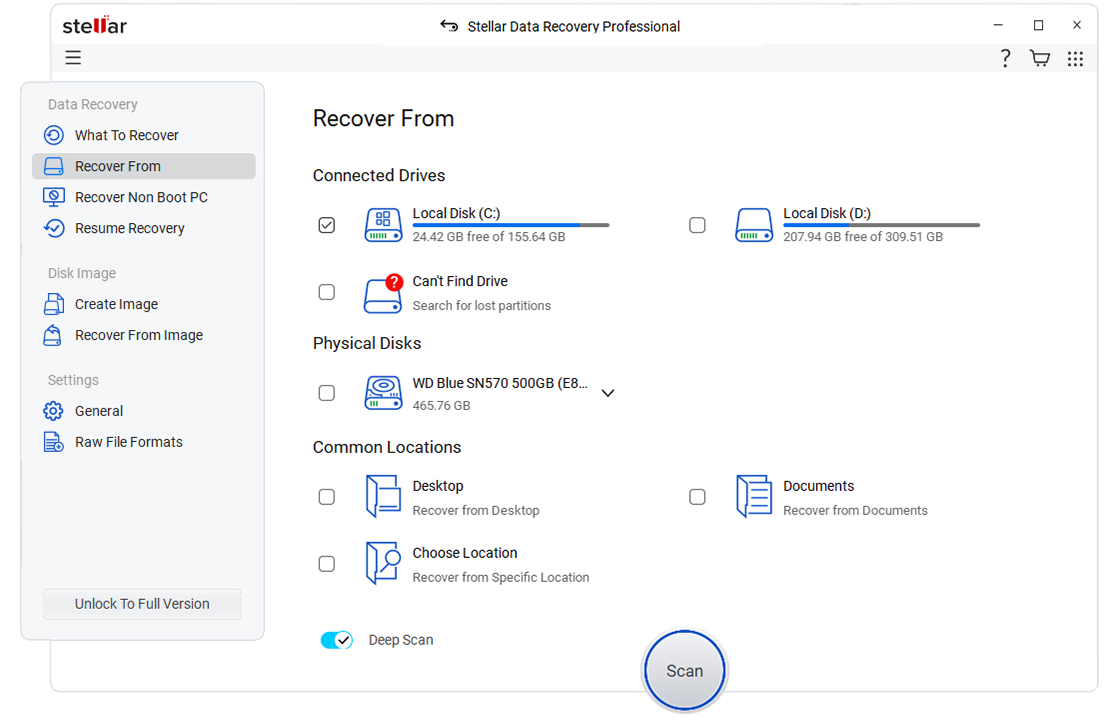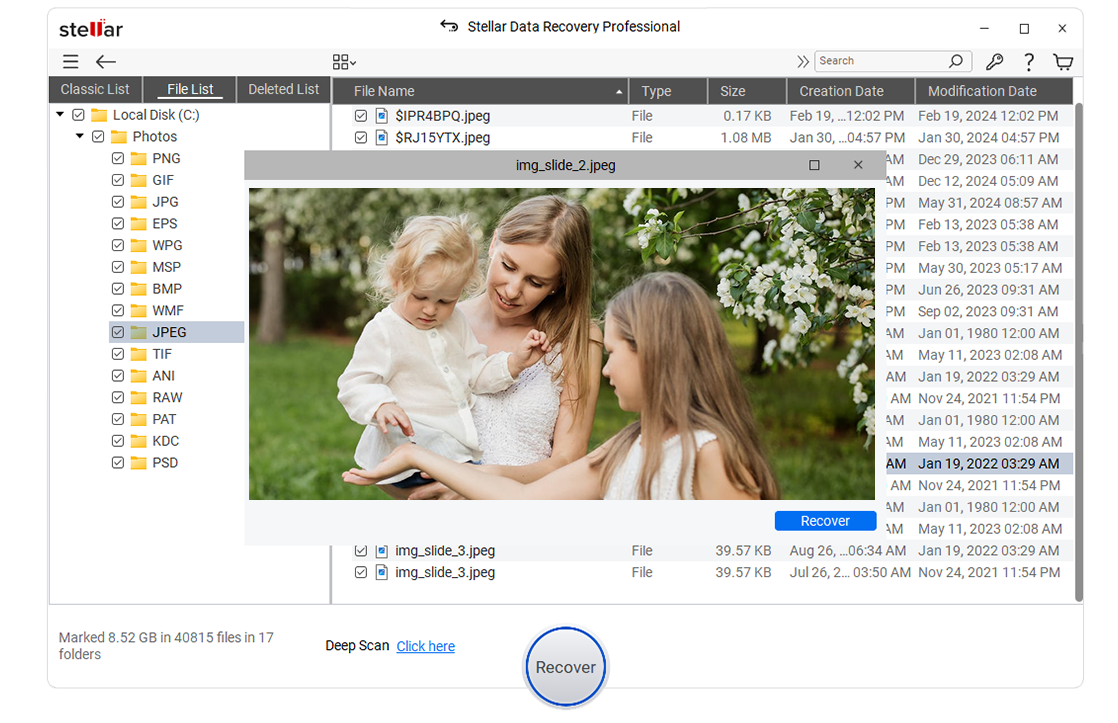A “Data Error (Cyclic Redundancy Check)” in Windows is occasionally an early warning sign that something is amiss. It can appear, for example, when you try to copy files, open a folder, or use an external hard drive. Either way, at best it is, at worst, the sign of a dying drive, and you could lose data or even see the system crash. The good news is that the issue can be resolved—but it must be treated, especially if your data is still important to you.
In this write up, we will describe why CRC errors are experienced, how you can restore your files safely, and some methods to fix the problem permanently using both built-in utilities and reputable applications.
Understanding the CRC Error
CRC refers to Cyclic Redundancy Check, a data checking method employed by Windows to identify file or storage device failures. CRC is a type of digital fingerprint or checksum employed to verify if the data read is identical to the one written. While storing or transmitting data, it is given a CRC value depending on the content of the data. Upon retrieval, the system re-computes the CRC and compares the two. If values are equal, no problem. Otherwise, the system detects the data as altered or corrupted and sends the “data error (cyclic redundancy check)” warning.
Common causes of CRC failures
Prior to jumping into solutions, it is better to understand what usually causes such errors:
1. Bad Sectors on Hard Disk Drives (HDDs)
Sectors are mini storage areas on a disk. Data written in bad sectors cannot be read. A CRC error is usually the outcome.
2. Corrupted Files
Files that were saved incorrectly, got corrupted while copying, or were not closed correctly can lead to CRC mismatches.
3. Damaged External Drive
If you remove USB drives, External SSD, or SD cards without a safe eject, it can become corrupted or physically damaged.
4. Broken cables or malfunctioning connectors
A damaged SATA or USB cord might end up causing an interruption in the data transfer, leading to corruption.
5. Abrupt Power Loss or Improper Shutdowns
Abrupt system shutdown or power loss during operations on files you are undertaking can corrupt files or sectors of disk.
6. System File Corruption
When Windows operating system files are corrupted, particularly those that relate to file system management or disk I/O operations, CRC errors will exist.
7. Malware or Virus Attacks
Some malware changes files or the drive structure, and hence integrity checks fail.
Why Must You Recover Data First
It should be a safe practice to not try to fix a CRC error right away. Most repair operations, mainly disk checking and scanning can fix errors but at the cost of overwriting recoverable information in the process. If there are essential files in the faulty drive, recover them first. It is for this reason that it’s important to start with data recovery software prior to starting repairs.
Data Recovery Using Stellar Data Recovery Professional
To safely recover your files from a non-accessible or malfunctioning drive, use a good recovery software like Stellar Data Recovery Professional. It is designed particularly to scan drives quickly, including those with CRC or sector level issues.
Steps to Recover Your Files:
1. Download and install Stellar Data Recovery Professional from the official website.
2. Insert the concerned drive into your computer.
3. Launch the program and then go on to choose the type of information you want to retrieve like photos, files, videos, etc.

4. Pick the drive that’s showing an error and click Scan.

5. Try using the Deep Scan option if the regular scan fails to indicate results.
6. Preview files once the scanning is complete.

Never recover and save the restored files again to the same faulty drive—it might overwrite and destroy inaccessible data.
7. Choose and transfer the recovered files to another healthy storage device.
Using recovery tools before attempting solutions avoids losing important files while repairing the error.
Method 1: Use Windows Error Checking Tool
On the bright side, Windows do have a pre-installed utility which has the ability to detect and repair minor file system faults, some of which result in CRC errors.
Follow the process below:
1. Open File Explorer.
2. Right-click on the error-displaying drive and choose Properties.
3. Click on the Tools tab.
4. In Error checking, click Check.
5. But if you’re prompted, allow the scan to continue. Windows will also offer you a chance to fix any issues that are taking place.
This is a good place to start if you feel uneasy using the command line, and it is usually safe to execute even prior to file recovery (though backing up is safest).
Method 2: Run CHKDSK Command (data error cyclic redundancy check fix cmd)
CHKDSK is a stronger disk repair option that searches out and fixes file system and sector-level errors. It also marks bad sectors so the system will not use them again in the future.
But be warned: CHKDSK will make some of the corrupted files inaccessible—one reason why we recommend you try recovery software first.
To execute CHKDSK:
- Press Windows + Q, type cmd, and select Run as Administrator.
- At the command prompt, type:
chkdsk X: /f
- Substitute X with the drive letter indicating the CRC error.
- To scan thoroughly, type:
chkdsk X: /f /x /r
* /f: Fixes errors on the disk.
*x: Tries to force the drive to unmount prior to scanning.
* /r: Identifies bad sectors and recovers readable data.
- Press the Enter key and allow the utility to complete its work. It will take a few hours or minutes depending on the drive’s size and its condition.
This command is typically associated with the “data error cyclic redundancy check fix cmd” process, and is extremely effective—although not data-safe.
Method 3: Run SFC Scan for System File Corruption
If the CRC error is related to system files or on boot time or Windows process loading, it may be due to corruption of core operating system files. Then use the System File Checker (SFC).
Steps:
1. Hit on Windows key + R, enter cmd, then press Ctrl + Shift + Enter to open as administrator.
2. At the command prompt, type:
sfc /scannow
3. Press Enter.
This makes the system proceed with a scan for damaged or missing Windows files followed by automatically restoring them with local cached copies.
Post this process, restart your computer and attempt to open the drive again.
Preventing CRC Errors in Future
Once you have recovered your data and fixed the error, it is recommended that you take precautions so that you do not face this issue again.
Best Practices for Prevention:
* Safely eject storage devices before removal.
* Avoid abrupt shutdowns while updating or operating on files.
* Use power backup (UPS) for the desktops to prevent power-outage corruption.
* Replace old hard disks or flash memory showing signs of wear.
* Make sure to backup crucial files at every interval with cloud services or external drives.
* Make use of antivirus programs to prevent infections from malware, which can damage files.
* Track drive health using the following tools:
* CrystalDiskInfo
* Hard Disk Sentinel
* Western Digital Dashboard or Seagate SeaTools
Also, it is advisable to run CHKDSK every now and then on drives with important data. Catching errors early may assist you in maintaining the longevity of your storage devices.
Takeaway
A data error like cyclic redundancy check might seem harmless at first, but it would be a mistake to overlook it. It is a sign that either your data, your file system, or your hardware is broken.
Fix the damaged drive using Windows Error Checking or CHKDSK. If you find the issue to be system-oriented, reinstall missing or corrupted system files with the help of SFC scan.
Majorly, practice precautions to avoid CRC errors from happening in the future altogether. Employ smart troubleshooting into effective preventive methods to repair the CRC error today, and reduce the chances of any damage tomorrow.
Whether you are a beginner or a pro, finding the error and correcting it does not necessarily have to be a daunting task. All you need to do is take one step at a time—and yes, always save your data first.